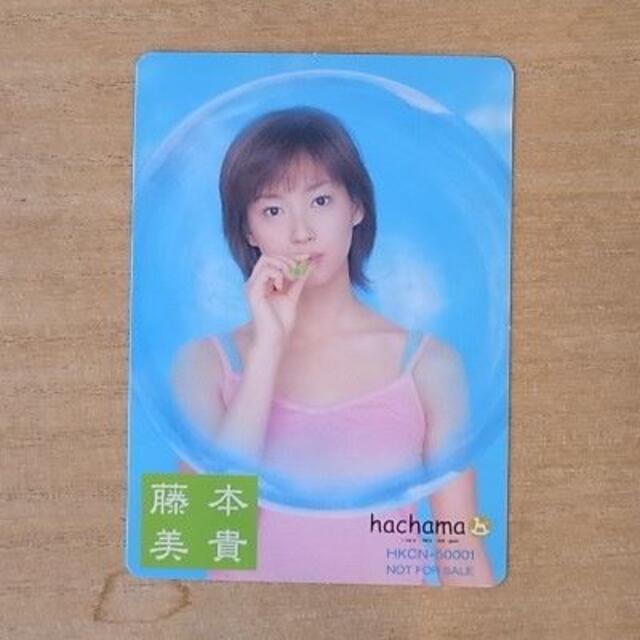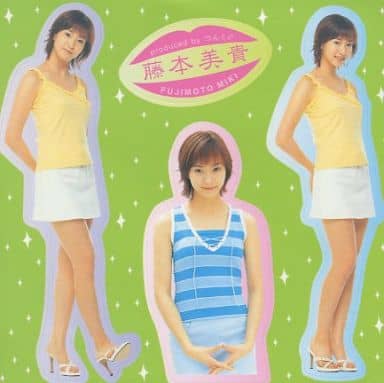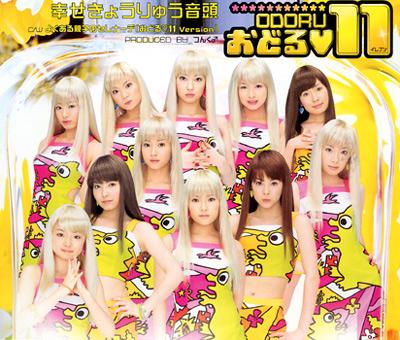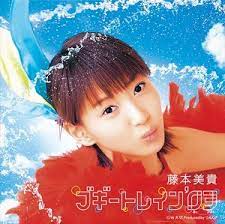- 2002 Debut Miki Fujimoto’s solo debut period
- On March 13, 2002, the first single “The Long Sunday We Cannot Meet” was released.
- Released on June 12, 2002 [Softly kissing and hugging
- Released on September 4, 2002 [Romantic Floating Mode].
- November 7, 2002 [boyfriend].
- Released November 20, 2002 [Shall We Love?
- February 5, 2003 release [Boogie Train ’03
- February 26, 2003 release [MIKI①].
2002 Debut Miki Fujimoto’s solo debut period

Miki Fujimoto, who is making a big breakthrough with her character of a mother with a big heart in the year 2024.
In 2010, she married Tomoharu Shoji of the comedy duo “Shinagawa Shoji” from Yoshimoto Kogyo and is a mother of three children.
She was also a solo idol. She joined Morning Musume。 We would like to introduce a year of her life before joining Morning Musume。
Born on February 26, 1985 in Hokkaido, Japan
1999 avex dream audition finalist, but was not selected.
In 2000, she auditioned for Morning Musume’s 4th term, but was not selected. She decided to move to Tokyo from Hokkaido.
On March 13, 2002, the first single “The Long Sunday We Cannot Meet” was released.

It reached No. 13 on the Oricon Weekly Chart!
The coupling song “Let’sDo Great Discovery” was premiered at the Hello! Project concert that year!
And this CD came with a trading card as a bonus!

By the way, as a side note, I was able to appear on “Shabekuri 007” with Miki Fujimoto as a guest, where I presented my card and was recognized as a fan.
The song is a bright and pop song, and was later performed by Hello! Project members performed this song at their concerts, and it is still sung to this day.
Before she released this song, her senior Aya Matsuura debuted first, and she and Aya Matsuura have been good friends since her debut. This one later decided to form a unit!
Released on June 12, 2002 [Softly kissing and hugging

Miki Fujimoto’s second single and her first Oricon Top 10 song!
The colorful song has a summery tune with a summer release and a double wink at the end of the song! The song has a more mature finish with a wet singing style instead of the energetic singing style of the previous song.

It came with a sticker as an initial bonus, which I still keep to this day in 2024.
And this summer is a hard summer with the Boo Takagi collaboration and the Halo Pro Summer Shuffle.


After this, it became his biggest hit song, and is still sung by him today. Here is the song
Released on September 4, 2002 [Romantic Floating Mode].

This song reached No. 3 on the Oricon Weekly Chart! The song became a representative song of NHK’s Kohaku Uta Gassen that year, and was the top batter.
It later became Otagei’s signature song. Otagei starts with “Kneeling on the ground” and ends with “Otono no Otona ga~.
He was surprised at first, but now he even creates a space for it.
Not everyone started doing this otagei when it was released, but there were a few who did it.
A few years later, it spread, and now it is being propagated in circles at Waseda University and the University of Tokyo, and the younger generation is also doing it.
This was shown on Nippon Television’s “Shabecuri 007” and can be viewed on Tver or Hulu.
November 7, 2002 [boyfriend].

Released in a flow that gained momentum from the previous song.
From this single, single V “single music video” is now available.
And I like the feel of the jacket of this CD, perhaps they used good material? I really want you to hold it in your hands and touch it (laughs).
The song here is about a sad maiden’s heart, and unlike the debut song, it’s not about a relationship? Can’t you go out with me? Are you still friends with a guy? The outfit was also a mini-skirt 25cm above the knee.
We’re going to form a new unit after this.
Released November 20, 2002 [Shall We Love?

Maki Goto, Aya Matsuura, and Miki Fujimoto’s Strongest Unit
Goto “Go”, Matsuura “Mat”, Fujimoto “Toh”.
[Gomatou].
At the time, Miki Fujimoto was dissatisfied because only her part was read differently. This song reached No. 1 on the Oricon Weekly Chart.
Since she and Aya Matsuura, who was a fellow soloist, were good friends, it was very easy for them to work together. The lyrics of the song “I want to laugh” are noteworthy.
On January 1, 2003, Japan was shocked. Miki Fujimoto announced that she was joining Morning Musume。 Miki Fujimoto announced that she was joining Morning Musume。
She, the public, and the current Morning Musume。 The public and the current Morning Musume。 And then Morning Musume。 released her last single before joining Morning Musume。
February 5, 2003 release [Boogie Train ’03

This CD case is a special can case with a picture label disc.
The CD case is a special can case with a picture label disc.
The chorus of the song features the choreography of “Tomorrow is CHUCHU~” and was later covered by S/mileage in “Boogie Train ’11”. Both are wonderful songs.
February 26, 2003 release [MIKI①].

His first solo album was released on his birthday.
In addition to the singles released up to now, the album includes four songs, the coupling song “Let’sDo Great Discovery” from his debut album, and the Fujimoto version of “Gomatoo”.
Fujimoto’s version of “Shall We Love?
The album became a hit, reaching No. 3 on the Oricon Weekly Charts and selling 120,000 copies.
This is currently the first and last album by 2021, but I hope they will release another album.
I hope that this will be the last time Morning Musume。 This concludes our feature on Miki Fujimoto before she joined Morning Musume。 Next time, I would like to write about idols other than Hello! Project idols.
Project, other idols, and then Halo Pro, in that order.



